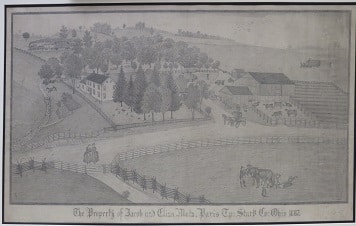
The Paper Conservation Section of McKay Lodge Conservation Laboratory has now treated a total of 22 of drawings by Swiss itinerant artist Ferdinand A. Brader. His charming, historical drawings often depict life on farms and in towns located throughout Pennsylvania and Ohio during the second half of the 19th century. The latest Brader conservation treatment of The Property of Jacob and Eliza Matz, Paris TP: Stark County Ohio 1887 was completed at our conservation lab facilities in Oberlin, Ohio by Gina McKay Lodge, Senior Paper Conservator, assisted by Conservation Technician, Dee Pipik.
This Brader conservation treatment, however, is just one of many. Each Brader conservation treatment is a new challenge requiring a fresh approach and often, because of their size, creative logistical solutions. In addition, McKay Lodge Conservation Laboratory’s experience with so many historic documents and works of art on paper in similar conditions have enabled the paper conservation lab to develop stream-lined treatment procedures that are both safe for paper-based objects as well as highly cost effective.
In this blog, we would like to provide a brief glimpse of the variety in style and condition of just a few of our Brader conservation treatments, and also the similarities
Variety in Style, Condition, and Treatment
The drawings treated range in size from 9 x 13 inches to 32 x 48 inches. Most illustrations depicted farms, but his drawings treated at the lab also feature towns and of flowers on a Bible. Most of the Brader drawings are executed in graphite, but some have colored pencil areas.
Drawings by Brader requiring conservation treatment were typically in one piece, but this is not always the case. The drawing pictured here came to the lab in over 10 pieces, broken along folded and taped lines.
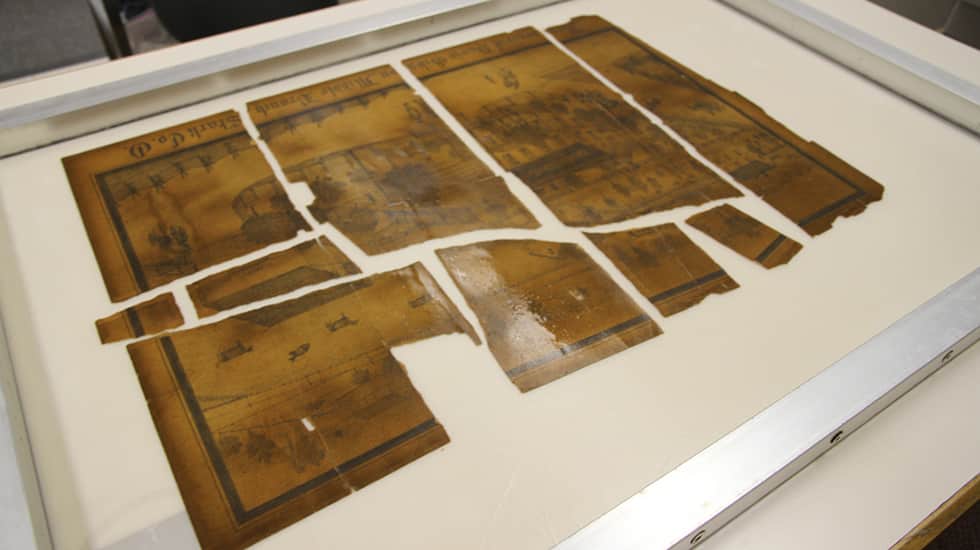
Some have been continuously on display; others tucked away in barns, attics, or basements, all but forgotten. Some had little to no damage; others were water-damaged, insect-damaged, torn, folded, had mold, or a combination of these.
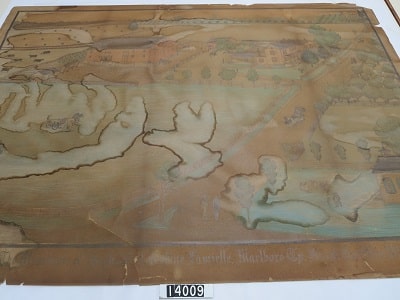
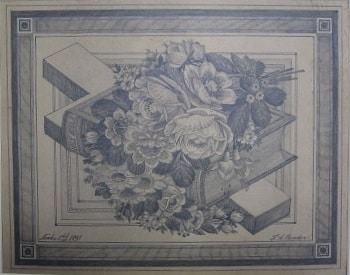
The one characteristic they all had in common was discolored, dark paper and embrittlement from acid build-up in the paper. This had do to do with the materials he used, his technique, aging, and environmental exposure. You can read more about the darkened papers and how they are treated in our post Brader Problems and Solutions.
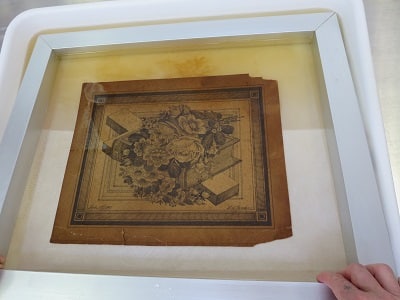
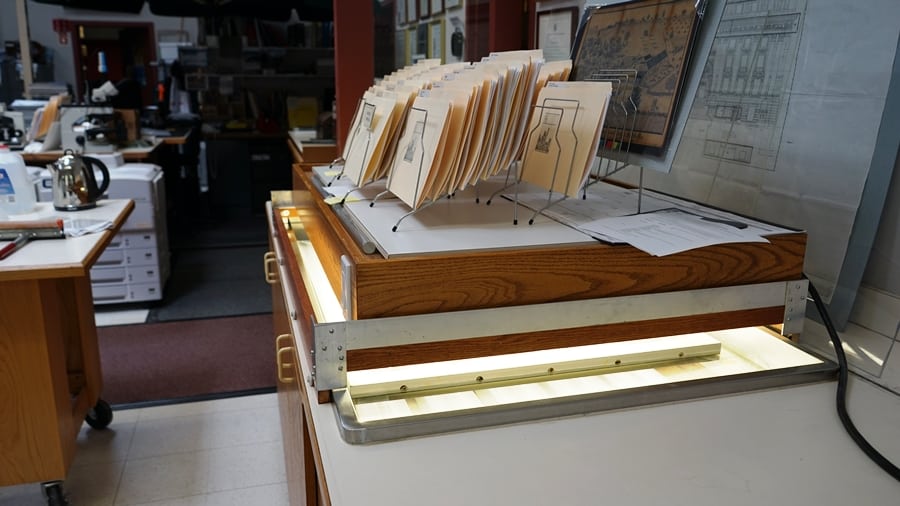
The aim of all the Brader conservation treatments was two-fold: the removal of the damaging acids in the paper and the over-all lightening of the paper. Conserving Brader drawings not only improves the appearance, but also lengthens the life span of these important artworks.
